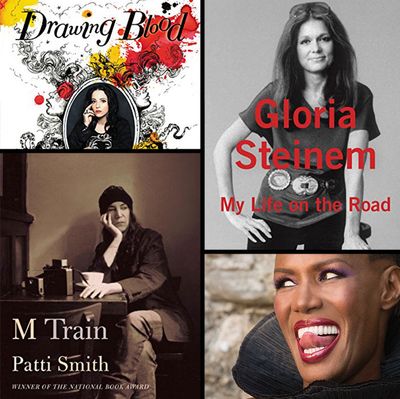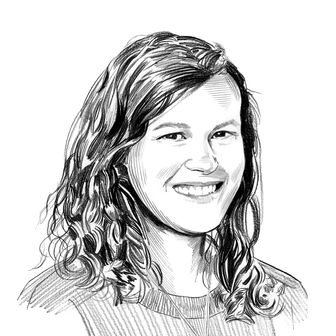
This week, the Cut reflects on self-reflection with a series of stories devoted to the art of memoir.
This fall is stacked with exciting new memoirs, and we’ve combed through some of the most anticipated new titles for their most candid moments of reflection and revelation. Here’s a taste of what to look forward to, from Shonda Rhimes’s admission of intense stage fright to Mary Karr’s thoughts on prepubescent sexuality, and much more.
Mary Karr: The Art of Memoir (9/15)
In a how-to book that’s also a look back on her writing career, Mary Karr recalls the challenge of faithfully portraying her prepubescent sexuality in her memoir Cherry. “I was prepared to overhaul all the tepid writing about puberty that women from the more prudent past had used to glaze over desire,” she writes. Yet that turns out to be harder than she anticipated — in part because it required revisiting the “unsexy,” “uncool” desires of her adolescent self in earnest. “Finally, it came to me: as I’d been working, I’d unconsciously superimposed my thirty-something libido onto my child self. The feelings felt ‘untrue’ because they were. What I’d been leaving out was the hazy, soft-focus obsession with being loved that really preoccupied my girl self — all the sappy romantic notions that formed the basis of my early fantasies were completely G-rated. Being boy-crazy was not being sex-crazy. I didn’t fantasize about being boffed into guacamole. Rather, I imagined the boy I liked at the roller rink skating over to me during the couples skate with one red rose.”
Grace Jones: I’ll Never Write My Memoirs (9/29)
Grace Jones’s reflection on her relationship with Jean-Paul Goude — her former collaborator and partner, as well as the father of her son — is clearheaded and nuanced. She leaves no question that she revered him, and is thoughtful about the impact that his work had on their personal life. “It was through how Jean-Paul rendered me as a realistic fantasy, that I first really entered many people’s consciousness as an original being, an original beast,” she writes, explaining that ultimately, their relationship wasn’t sustainable. “I became very disillusioned, concerned that he preferred the illusion he had created, not the actual me. It made me very insecure. It made me think that if I wasn’t this perfect human being, it would not satisfy him. I couldn’t count on him to be there for me when I really needed him, because he saw that as weakness. The Grace Jones he had designed was not weak.”
Patti Smith: M Train (10/6)
One of the most delightful revelations from Patti Smith’s latest memoir comes when she admits that her attachment to her preferred café table is so great that, if it’s occupied, she will hide out in the bathroom until it’s available. “I was late getting to Café ‘Ino. My table in the corner was taken and a petulant possessiveness provoked me to go into the bathroom and wait it out. The bathroom was narrow and candlelit with a few fresh flowers in a small vase resting atop the toilet tank. Like a tiny Mexican chapel, one that you could piss in without feeling blasphemous I left the door unlocked in case someone was in genuine need, waited about ten minutes, and exited just as my table was freed.” By her account, she’s pulled this stunt more than once.
Dasha Tolstikova: A Year Without Mom (10/6)
Chronicling her life as a 12-year-old in Moscow, the illustrator Dasha Tolstikova captures the terrible confusion of being excluded by preteen friends. When Masha and Natasha start skipping history class, Dasha is torn. Soon, they stop coming to first period: “I know they are just sleeping in and not hanging out somewhere together, but it still makes me sad, being at school by myself.” When she’s transferred to a higher math class, her friends don’t talk to her for two days, “but on Friday, they wait for me by the front gate of the school and say hello as I approach. We never talk about what happened.”
Carrie Brownstein: Hunger Makes Me a Modern Girl (10/27)
Sleater-Kinney guitarist Carrie Browstein debunks the nostalgic clichés of rock-star life on the road. Instead, she candidly recounts the panic attacks and stress-induced shingles she experienced on tour (which ultimately contributed to the band’s breakup in 2006). She portrays the day-to-day stress of touring with little sentimentality: “It’s no wonder that many artists deal with tour by desensitizing themselves until the moment they are onstage. Tour is a precarious nexus between monotony and monomania — a day of nothingness followed by a moment that feels like everything … But most of the day feels shapeless, a blurriness that comes into focus only once you soundcheck and begin the progression toward the show itself.”
Drew Barrymore: Wildflower (10/27)
In this “book of stories,” Drew Barrymore provides a glimpse into the unglamorous life of an emancipated 14-year-old. “My fridge was literally a science project,” she recalls of her early days living alone. “I only had takeout cartons and to-go boxes that had lost their shapes but much worse … they all had grown spores. Yes, it’s true. I didn’t even know you were supposed to throw them away.”
She writes of the utter confusion and terror she experienced during her first trip to the Laundromat. “It was the kind of place where some of the washers were upright so the washer and dryer looked the same, stacked on top of each other, which confused me so much because I was convinced all the water would come pouring out and I would make the biggest fool of myself ever … needless to say, I put the bleach directly on the clothes and then I put the liquid fabric softener right in the dryer.”
Gloria Steinem: My Life On the Road (10/27)
In her latest memoir, Steinem reflects on the backlash against her 2008 New York Times editorial in support of then-presidential candidate Hillary Clinton. The column, titled “Women Are Never Front Runners,” was roundly criticized for its assertion that gender, as opposed to race, “is probably the most restricting force in American life, whether the question is who must be in the kitchen or who could be in the White House.”
“I was seen as asking people to take sexism more seriously than racism, “ Steinem recalls, describing the response to the piece. “I came to dread the particular ring of my cell phone. Though I had been called many things, from a baby killer to a destroyer of the family, those attacks had come from people with whom I really disagreed. These attacks came from people whose opinion I valued and who were accusing me of holding a position I didn’t hold.”
Shonda Rhimes: Year of Yes (11/10)
Shonda Rhimes’s blunt account of her own social anxiety is a refreshing reminder that career success doesn’t end insecurity. She hilariously describes her terror of live TV, recounting the scenarios that play out in her head leading up to an appearance on Jimmy Kimmel Live: “You know what else happens on live TV? Shonda walking out to greet Jimmy and instead of walking like a normal person, I trip over my feet, falling and cracking my head on the corner of Jimmy’s desk, causing my cerebrospinal fluid to leak out as I lie twitching on the ground with my dress bunched up around my waist, revealing my double Spanx to a national audience.” In the end, she convinces Kimmel to do a pre-recorded segment, but still “became a block of solid wood and could not seem to both walk and talk while the camera was rolling.”
Mary-Louise Parker: Dear Mr. You (11/10)
Parker’s literary debut pieces together her story through hypothetical letters written to the men in her life. The final, heartfelt epistle is addressed “Dear Oyster Picker” — to the stranger who harvested the shellfish her beloved father ate before just he died. Parker recounts her devastation when the van arrived to take her father’s body away: “I knew part of him was in there still, in a plastic bag under a sheet. They were taking that away. I imagined hearing the van’s doors closing, what that would sound like from the inside of a bag,” she writes “He wouldn’t know where they were taking him and worst of all, I explained as I tried to crawl and then stiffly force my way in the back of the van, worst of all I cried my father is afraid of the dark / please don’t make him go by himself / it’s too dark in there / he will hate it.”
(Read an excerpt from Dear Mr. You here.)
Molly Crabapple: Drawing Blood (12/1)
Artist and writer Molly Crabapple cuts through the bullshit with her account of what it takes to get noticed as an artist. “Talent is essential, but cash buys the opportunity for talent to be discovered,” she writes. “Artists are not supposed to care about commerce. The lies told to artists mirror the lies told to women: Be good enough, be pretty enough, and that guy or gallery will sweep you off your feet, to the picket-fenced land of generous collectors and 2.5 kids. But make the move first, seize your destiny, and you’re a whore.”
She’s also upfront and unapologetic about the fact that she wouldn’t have been able to make it as an artist without years spent modeling for SuicideGirls and amateur photographers she met on the internet. “Naked girl money was my escape hatch,” she explains. “Without it, I’d never have been able to do the work that got me noticed. I’d never have had the materials, the space, or the time.”






